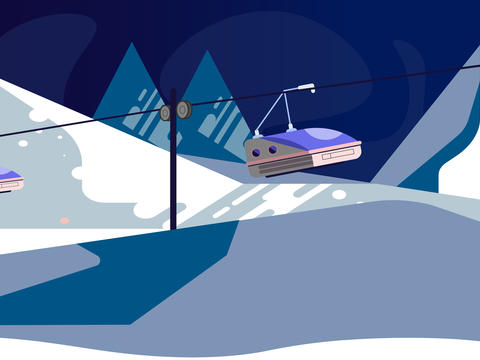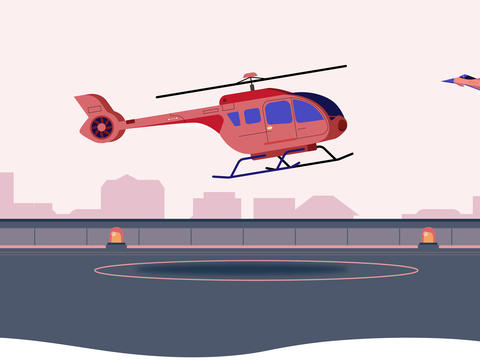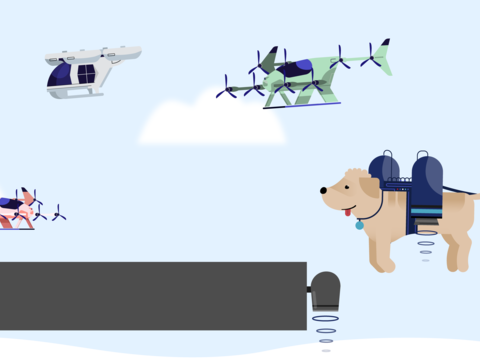Satellites are fascinating
A fun and easy-to-understand introduction to satellites

What do satellites do and how do they work?
“Look, there is a shooting star!” - “No, this is a satellite!” - “What is it ? How does it work?” This conversation between a kid and an adult might be yours! Space is fascinating, whether you’re young or old.
Satellites are involved in a lot of things… and you might need some help to explain in a simple way what they are! Good news: we are here to help!
What would our world look like if we didn’t have satellites? One thing’s for sure: modern life would be very different. Satellites have a wide range of applications, and are mainly used in our daily lives for tasks like weather forecasting, climate change and biodiversity monitoring, transmitting television broadcasts, wayfinding applications like GPS, mapping services, potentially helping in emergency situations, and online activities like social networking or gaming.
Scroll a little bit to watch the videos and discover a fun and easy-to-understand introduction to satellites.
First, watch the videos
-
 1. Satellite - How do we build a satellite?
1. Satellite - How do we build a satellite?
1. Satellite - How do we build a satellite?
Building a satellite is complex. This video gives an overview of the steps from build to lift-off! Discover the main components, from the key electronic systems and its power source to data-capturing instruments like the camera and telescope. A satellite also has to undergo extensive testing before it’s time to go to space! If you were designing a satellite, what would you add to it?
-
 2. Satellite - What are Earth observation satellites?
2. Satellite - What are Earth observation satellites?
2. Satellite - What are Earth observation satellites?
Do you know what an Earth observation satellite does? The answer is lots of different things! There are some that monitor the weather, while others record data on wildlife habitats and climate change. Depending on the task, some Earth observation satellites are very high up and monitor a fixed point, while others are closer and scan a wider area. So the next time you see a shooting star, it might be a satellite. If you were building an Earth observation satellite, what would you monitor?
-
 3. Satellite - What is a telecommunications satellite?
3. Satellite - What is a telecommunications satellite?
3. Satellite - What is a telecommunications satellite?
Telecommunications satellites allow us to share images and information all around the world. The next time you’re watching a football game on TV, it's thanks to a telecommunications satellite. By bouncing information around at the speed of light, it’s nearly instant to watch a live broadcast, make a call, or play an online game. Telecommunications satellites also play a key role in emergency missions, if you have to call for help from a remote place. What message would you use a telecommunications satellite to send to the other side of the planet?
Then, do the activities
Activity sheets
Become a satellite image analyst - Activity sheet
Chat with your Grand-Ma - activity sheet
Activity sheets
Become a satellite image analyst - Activity sheet
Chat with your Grand-Ma - activity sheet
And test your knowledge
A. Where on a satellite would you find key systems like the computers and thrusters?
1.The platform
2.The solar panels
3.The protective golden coating
B. Why does it take at least 12 months to build a satellite?
1.Because there are a lot of complex electronic systems and sensitive instruments
2.Because it takes a long time for the gold paint to dry
3.Because satellites need to undergo extensive testing
C. Which of the following can be monitored by an Earth observation satellite?
1.The weather
2.Volcanos
3.Ant colonies
D. Why do we need a lot of power to launch a satellite?
1.Because of global warming
2.Because of gravity
3.Because of electromagnetic fields
E. Put the following sentences in the right order:
1.The satellite filters the signal to make it clear
2.Video and sound are coded into electromagnetic waves that travel to a satellite
3.The satellite amplifies the signal and sends it back to Earth
F. Electromagnetic signals travel at the speed of light, so how long does it take to transmit the football game?
1.Half a second
2.A quarter of a second
3.A quarter of a minute
Answers:
A. The platform
B. 1 & 3
C. 1 &2 - and much more, but certainly not the ants which are too small.
D. 2 - Gravity is the force by which a planet or other body attracts objects toward its centre. It’s what keeps us stuck on Earth and not floating away into space! To escape Earth’s gravitational field takes a lot of power. Did you know that gravity also keeps all of the planets in orbit around the Sun?
E. 2, 1 then 3
F. 2 - A quarter of a second



